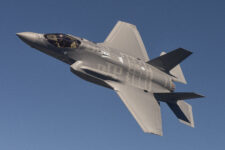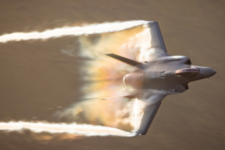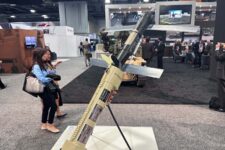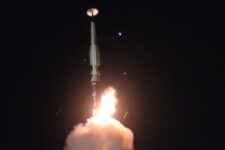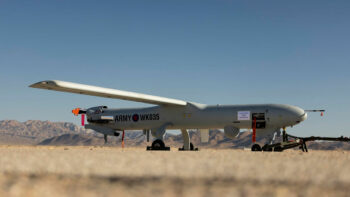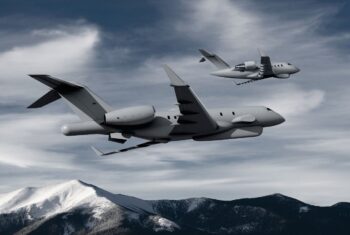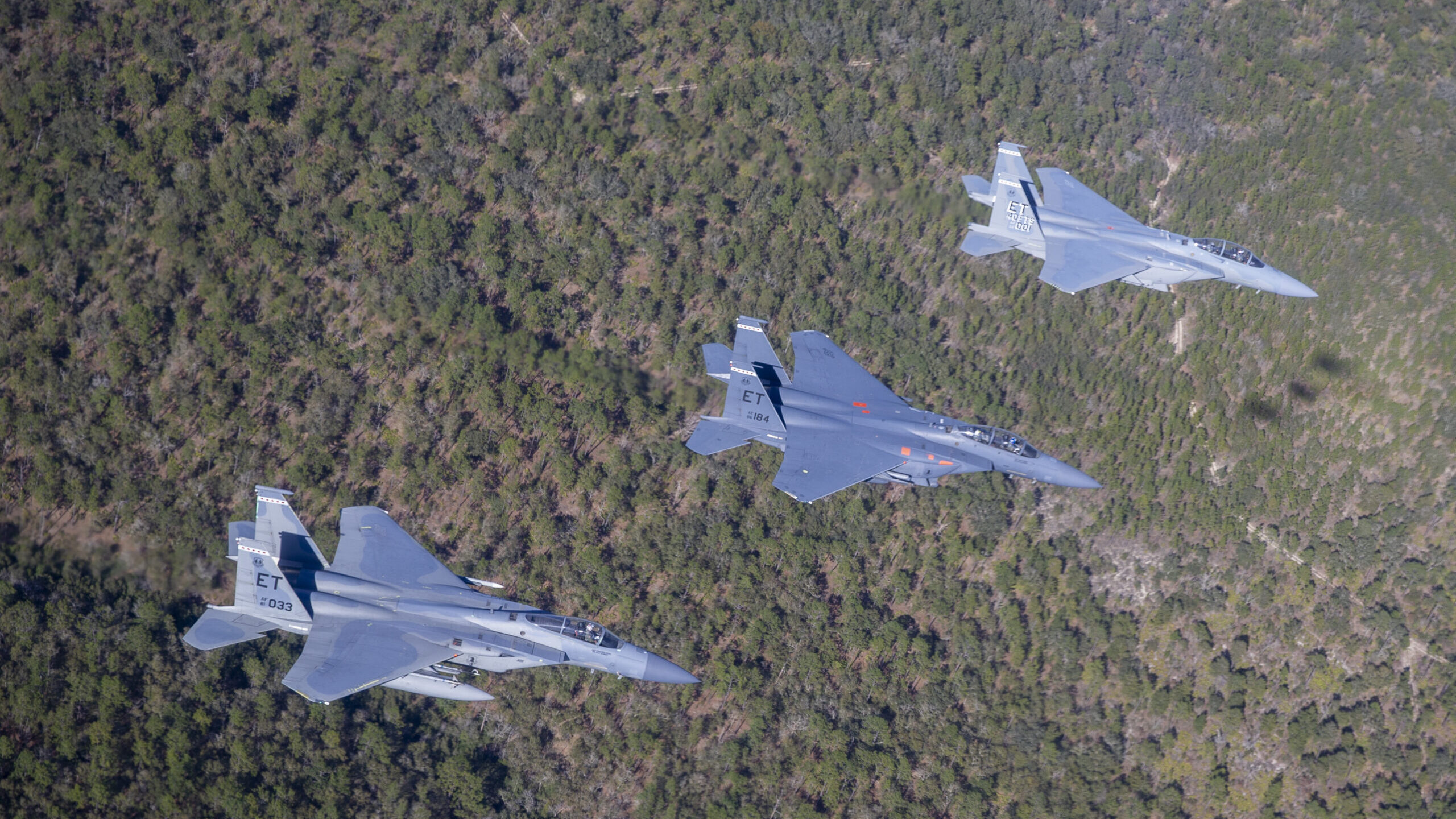
Lt. Col. Richard “Tac” Turner, Commander, 40th Flight Test Squadron, and Lt. Col. Jacob “Duke” Lindaman, Commander of the 85th Test ans Evaluation Squadron, deliver the first F-15EX to its new home station, Eglin AFB, Florida, 11 March, 2021. (U.S. Air Force/Tech. Sgt. John Raven)
WASHINGTON: With two major nuclear programs ramping up, the Air Force had to make hard choices on fighter procurement in fiscal 2023, the Air Force’s top officer said.
After three budgets where Air Force fighter buying soared to heights of more than 60 aircraft per year, the service requested 33 Lockheed Martin F-35As and 24 Boeing F-15EXs in FY23, for a total of 57 jets.
Asked about the decision during a Tuesday roundtable with reporters, Air Force Chief of Staff Gen. CQ Brown said the service had to prioritize keeping the B-21 Raider bomber and newly christened LGM-35A Sentinel intercontinental ballistic missile on track.
“We’re doing something we’re doing once in a generation, and that’s recapitalizing our nuclear portfolio. The United States Air Force has two thirds of the nuclear triad, and 75% of the nuclear command and control and communications,” he said.
Brown acknowledged that the administration’s budget request was “pretty generous,” with a $234 billion topline for the Department of the Air Force — more than the Army and Navy’s share of the pie. However, he said, the Air Force needs to balance its spending for new aircraft procurement with the demands of future modernization programs — both conventional and nuclear — as well as ensuring that current forces remain ready to meet combatant commander demands.
“Ideally, I’d like to get to higher [fighter procurement rates],” Brown said. “If I had a big blank check, I’d actually take care of it all.”
The Air Force wants to pare down to four combat aircraft types: the F-35, which will act as the “cornerstone” of the fighter fleet; the F-15EX, which can take on a role as a weapons truck and launch large hypersonic missiles; the F-22, which will eventually be replaced by the sixth-generation Next Generation Air Dominance; and the F-16, which will be continued to be modernized, Brown said.
RELATED: Tacair study to set ranges for aircraft numbers
However, questions remain about the ultimate makeup of the fighter fleet, when old combat aircraft will be retired and how quickly new airplanes will be purchased to make up for losses.
If Congress permits the Air Force to move forward with its divestment plans, the service will retire more legacy fighters in FY23 than the number of new fighters its getting. It plans to send 26 F-16C/Ds and 67 F-16C/Ds to the boneyard in FY23, a total of 93 aircraft.
Meanwhile, if the FY23 budget request is enacted at current levels, the Air Force’s fighter procurement number will be at its lowest point since FY19, the year before the service began buying the F-15EX.
When the service announced plans to begin buying the F-15EX in FY20, then-Air Force Secretary Heather Wilson said that the Air Force needed to ramp fighter procurement up to 72 aircraft per year. The Air Force reached that mark in the FY21 budget before dropping to 60 fighters in FY22.
In its unfunded requirements list, the Air Force includes $921 million to restore 7 F-35A models, which would bring the F-35 buy up to 40 jets in FY23. These aircraft would be Block 4 aircraft, purchased during Lot 17, the list notes.
That would be enough to push Air Force fighter procurement to 64 planes in the upcoming fiscal year. However, Brown noted that funding for readiness is a currently bigger priority for the service, topping the unfunded requirements list with a $579 million sum for weapon system sustainment.
The worst case scenario, however, is if lawmakers decide to take funding from modernization and readiness accounts to pour into retaining old platforms like the old F-15s and F-16s the service is trying to mothball, he said.
“What I don’t want to necessarily do is take that money and put it back into buying and keeping platforms that we’re trying to retire, he said. “It doesn’t make move us forward, and it actually eats into our weapons systems sustainment and flying hour aircraft availability.”
Romania signs LOA to secure entry to F-35 club
“This decision marks a significant milestone in Romania’s defense strategy and its commitment to maintaining a robust and advanced military force,” Lockheed Martin said in a statement.
